By ETHAN HARTLEY -- Major construction work to modernize various features at Warwick Veterans Junior High School are underway and ahead of schedule, and should be complete by December 2017.
This item is available in full to subscribers.
We have recently launched a new and improved website. To continue reading, you will need to either log into your subscriber account, or purchase a new subscription.
If you are a current print subscriber, you can set up a free website account by clicking here.
Otherwise, click here to view your options for subscribing.
Please log in to continue |
|
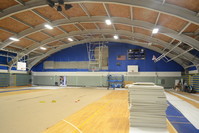
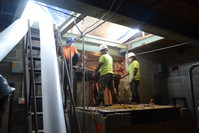
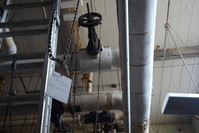
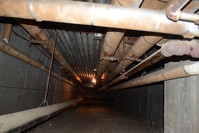
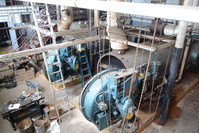
Major construction work to modernize various features at Warwick Veterans Junior High School – including a brand new HVAC system to replace an antiquated boiler system, asbestos abatement, efficient new lighting and electricity and a new elevator – is ongoing and ahead of schedule, and is slated to be complete by December of 2017.
“We’re really adding to the life of this building by decades,” said Superintendent Philip Thornton. “It’s still a good building with good bones.”
Vets has been under scrutiny by students and parents alike, at least since it was converted into a Jr. High School last year, citing its deteriorating conditions that included steam shooting through broken pipes into classrooms, fear of sickness-causing mold, unbearable heat and stale air forcing windows to be opened in the dead of winter and concerns about asbestos in the 900 wing.
The school underwent an inspection in January that revealed there was no public health issue in the building, but it was clear that major renovations would be required regardless. In March the Warwick City Council agreed to allocate about $4 million in bond money towards this goal, and Thornton estimated the cost to replace the HVAC would be around $6 million. Work on a new elevator was proposed to cost $500,000.
Work on the project, now assessed in total to cost $8.63 million, began after a five-week planning period on June 26. Construction crews from Ahlborg Construction Company, of Warwick, and subcontractors from Delta Mechanical Contractors, LLC, of Warwick, and Rossi Electric Company Inc., of Cranston, got to work removing all the old ducts, organizing electrical wiring and began staging for brand new ducts and piping to be installed throughout the school. Architectural work was conducted by Symmes Maini & McKee Associates of Providence.
The project was split into two phases, where the first phase was originally intended to complete work in just the two gymnasiums, the locker rooms and the hallways and classrooms of the lower and upper floors of B wing, and on down to the auditorium before students returned in the fall.
However a lack of setbacks or delays have pushed the project ahead of schedule, and crews should be able to finish the upper and lower hallways and classrooms of C and D wings, as well as another 40 classrooms in the 900 wing (including total asbestos abatement). At this rate, a good majority of the work will be done before students come back, and all systems should be online and operational by December.
The main feature of the work is the new HVAC system, which will replace a system of antiquated boilers that are original to the building when it was first built in 1955. The two huge boilers are oil-burning, lit by a natural gas pilot, and the decades have worn down the system, and the cast iron piping that snakes out from it, so significantly that steam leaks have become commonplace in multiple rooms within the school.
The boiler system – housed in a large room with chain-operated valves that hang from the ceiling like industrial weeping willows – works pneumatically, meaning it responds to changes in air pressure. Due to the age of the building and a lack of maintenance, coupled with the thermostats not being operational, the system is essentially on an inefficient version of auto-pilot.
“It was too much heating. The system just runs. There’s no control over it and it just runs constantly,” said Bob Corrente, Construction Coordinator for Warwick Public Schools. “There were complaints about that and there was also not enough fresh air being cycled into the building...The new system will bring in fresh air as well as exhaust stale air.”
The old system utilized piping that ran underneath the floors of the main hallways, whereas the new system will contain all the piping, wiring and duct work overhead. The ceilings are all being replaced with new tiling and efficient LED lighting is being installed simultaneously. Each classroom will be fitted with two vents – both capable of supplying heat and air conditioning. The new system will burn natural gas instead of oil, and the air conditioning system will operate on electricity.
Although there is no estimate yet on how much money the new systems will save Warwick compared to the inefficiencies of the old system, Corrente said they would know by next year when they complete their reports to National Grid while applying for reimbursements.
Another exciting element of the new system is that it can, eventually, be operated remotely via the school’s server, and accessed at any school or administration building by Corrente. This will improve efficiency, as the system can be scheduled to run or be turned or off depending on the weather or if there is an unexpected occurrence, like a snow day.
The steampunk-style boiler room will undergo a full abatement for asbestos, and be completely removed by the end of next summer. However, it will first need to undergo between $15,000 and $20,000 of repairs in order to work in the interim before the new system goes fully online in December, according to Director of Buildings and Grounds for Warwick Public Schools, Steve Gothberg.
Another big change will be an updated, ADA-compliant elevator to replace the original. This is the only area of work that will require structural change to the frame of the building, as the shaft needs to be widened to accommodate the new elevator.
Other work includes trenching to run new electrical wiring into the building. The building’s electronics will be powered by new natural gas system and a 480-volt, 2,000 amp transformer will enable power to be supplied to the bigger fixtures like new elevator, and can then be transformed into 208-volt electricity within the building in order to power the everyday electronics inside the classrooms.
The work has also provided the chance to modernize features elsewhere in the school, like updating the gymnasiums so that one isn’t specified as a “boys” gymnasium and the other, smaller gymnasium labeled a “girls” gym. There will also, eventually, be a new paint scheme throughout the hallways.
"I remember back when I went to school here,” said Glenn Ahlborg, Vice President of Ahlborg Construction, and a member of the Warwick Veterans graduating class of 1974. “It’s really amazing walking through and seeing all the changes being made and everything coming out. It’s quite exciting.”
1 comment on this item Please log in to comment by clicking here
Okgo-okgo
A year after children suffered the consequences of being forced into an unsafe & unhealthy building is "too late", not "ahead of schedule".
Thursday, July 20, 2017 Report this